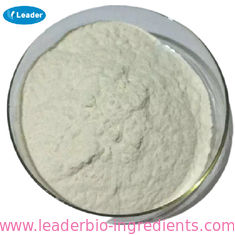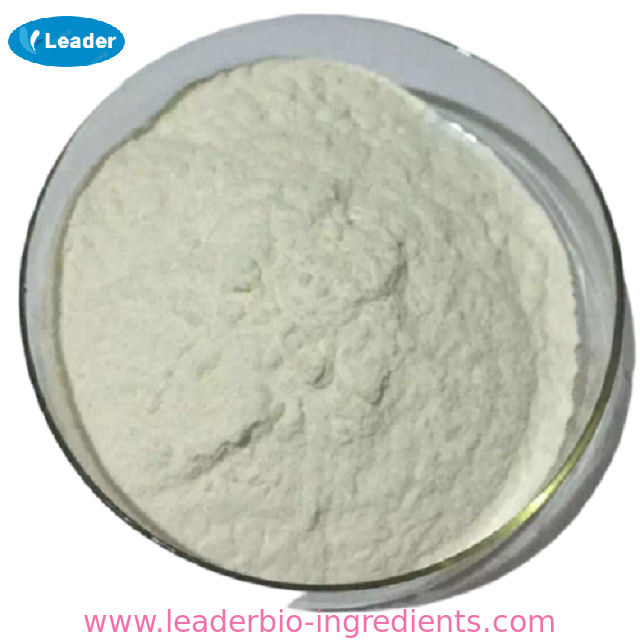| |
| Sodium propionate Chemical Properties |
| Melting point |
285-286 °C(lit.) |
| storage temp. |
Store at RT. |
| solubility |
H2O: 0.1 g/mL, clear |
| form |
Crystalline Powder |
| color |
White |
| PH |
8-9.5 (10g/l, H2O, 20℃) |
| Water Solubility |
995 g/L (20 ºC) |
| Sensitive |
Hygroscopic |
| Merck |
14,8669 |
| BRN |
3566934 |
| Stability: |
Stable. Incompatible with strong oxidizing agents. Hygroscopic. |
| CAS DataBase Reference |
137-40-6(CAS DataBase Reference) |
| NIST Chemistry Reference |
Sodium propanoate(137-40-6) |
| EPA Substance Registry System |
Sodium propionate (137-40-6) |
| |
| Sodium propionate Usage And Synthesis |
| description |
Sodium propionate is the salt form of propionic acid, which is an organic acid that is produced during the chemical degradation of sugar. It is a compound that is produced naturally in the body when certain fatty acids and amino acids are metabolized. Propionic acid is metabolized by a series of enzymatic reactions that are dependent on the presence of vitamin B-12, according to a 1996 article in the "International Journal of Vitamin and Nutrition Research." Sodium propionate is also chemically manufactured for a variety of industrial uses.
Sodium propionate is a common food additive that is industrially manufactured but also occurs in nature. Since it is toxic to mold and some species of bacteria, it is an especially effective additive in baked goods or other products that are susceptible to spoilage.
sodium propionate is an effective inhibitor of the growth of certain molds and some bacteria in bakery goods. It is usually preferred in non-yeast leavened bakery products because the calcium ions’ of calcium propionate interfere with the chemical leavening agents. In those bakery products, such as cakes, tortillas, pie fillings etc., chemically leaved agents are used (e.g. baking powder). sodium propionate is easy to handle and easy to incorporate into flour.
It is a safe compound when encountered at the low levels found in food. |
| Chemical properties |
It appears as transparent particles or crystal with specific smelly odor. It is easily subject to deliquescence in wet air. It is soluble in water, slightly soluble in alcohol. |
| Uses |
Primary uses: Antifungal agent, antiseptic agent (topical), disinfectant, food additive, ophthalmic agent.
It is used primarily as a mold inhibitor in bakery products. It is approved for use as a food additive in the EU, USA and Australia and New Zealand (where it is listed by its INS number 281). Chemically synthesized sodium propionate is most commonly used as a preservative in the food industry. It prevents the growth of mold and some bacteria, thereby prolonging the shelf life of packaged baked goods. According to the Code of Federal Regulations, sodium propionate is generally recognized as safe when used as a food additive. It is also used to prevent mold growth in packaged and processed cheese products. In addition, ammonium propionate is used as an additive in animal feed to prevent overgrowth of unwanted bacteria in the stomachs of livestock.
- It can be used as preservatives; used for anti-mould for cakes, waxberry and other mildew
- It can be used as germicide and antiseptic.
- Sodium propionate wet acid preservative has its antibacterial effect be affected by the environmental PH. The minimum inhibitory concentration was 0.01% at pH 5.0 and 0.5% at pH 6.5. In acidic medium, it has a strong inhibitory effect against various types of mold, aerobic bacillus or Gram-negative bacteria. It has special effect in prevention the production of aflatoxin while having no effect on the yeast. In addition, it is also used as a food preservative.
- In the leather, it can be used as masking agent in order to improve the alkali resistance of leather and tanning uniformity.
- In the food industry, it can be used for pastry preservation with the usage amount of 2.5g/kg (based on propionic acid, the same as below); in 3% to 5% aqueous solution, the maximal amount for soaking waxberry is 50g/kg. It can also be used as feed antiseptic.
- Germicide, antiseptic. Used for determination of transaminase; The general dosage is 0.1-0.3%.
|
| health risks |
Sodium propionate and calcium propionate are good preservatives, especially in food because very low toxicity has great advantages, bread usually calcium propionate, because bread is yeast fermentation, the use of sodium propionate can So that d increases dough, affecting yeast growth, will extend the time to face.
According to the Material Safety Data Sheet for sodium proprionate, as reported on ScienceLab.com, the pure chemical can irritate the skin if handled. However, since the general public would not come in contact with sodium propionate in its pure form, it does not likely present a risk. The risks of consuming sodium propionate are slight if you compare it to the possibility of consuming products that have mold or bacterial contamination. If you are worried about consuming sodium propionate, buy fresh bread or bake your own.
References: http://www.livestrong.com/article/501045-what-is-sodium-propionate/ |
| Toxicity |
ADI has not been subject to any specific restriction (FAO/WHO, 2001).
LD50 5.1 g/kg (mouse, oral).
GRAS (FDA, § 184.1784, 2000). |
| Usage limit |
GB 2760-96 (g/kg): pastry 2.5; soaking waxberry: 30 to 50; impregnated with 3% to 5% aqueous solution; should be washed before processing, calculated on propionic acid.
FAO/WHO (1984): processed cheese 3000mg/kg.
EEC regulations: it can be used for dairy products, bakery products, cheese and so on. Still used as beer and other viscous substances inhibitor. |
| Description |
Sodium propanoate or sodium propionate is the sodium salt of propionic acid which has the chemical formula Na(C2H5COO). |
| Chemical Properties |
Colourless crystals or, white or almost white powder, slightly hygroscopic. |
| Uses |
Fungicide, mold preventative. |
| Uses |
It is used as a food preservative and is represented by the food labeling E number E281 in Europe; it is used primarily as a mold inhibitor in bakery products. It is approved for use as a food additive in the EU, USA and Australia and New Zealand ( where it is listed by its INS number 281 ) . |
| Uses |
Sodium Propionate is an antimicrobial agent that is the sodium salt of propionic acid. it occurs as colorless, transparent crystals or a gran- ular crystalline powder. it is odorless or has a faint acetic–butyric acid odor, and is deliquescent. it is prepared by neutralizing propionic acid with sodium hydroxide. it is used in baked goods; nonalcoholic beverages; cheeses; confections and frostings; gelatins, puddings, and fillings; jams and jellies; meat products; and soft candy. |
| Definition |
ChEBI: An organic sodium salt comprising equal numbers of sodium and propionate ions. |
| Reactions |
It is produced by the reaction of propionic acid and sodium carbonate or sodium hydroxide. |
| Safety Profile |
Moderately toxic by skin contact and subcutaneous routes. Mildly toxic by unspecified routes. An allergen. When heated to decomposition it emits toxic fumes of Na2O. |
| Purification Methods |
Recrystallise it from H2O (solubility 10%) and dry by heating at 100o for 4hours. The solubility of the anhydrous salt in MeOH is 13% at 15o and 13.77% at 68o. It is insoluble in *C6H6 and Me2CO. [Henstock J Chem Soc 1341 1934, Beilstein 2 IV 701.] |
| |
| Sodium propionate Preparation Products And Raw materials |
|

